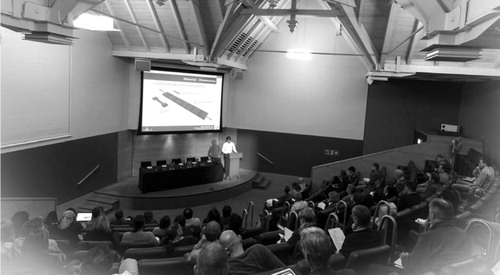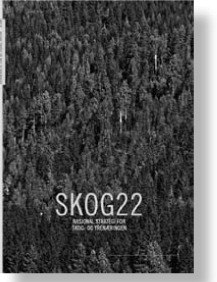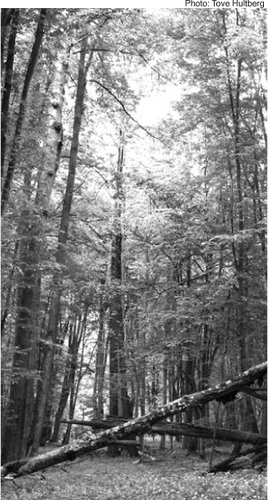“Wood is the urban future”
– a successful meeting for wood scientists in the WSE network
Edinburgh was the location for the 10th annual WSE network meeting, 13–14 October 2014. Over 70 participants from nine countries contributed a total of 34 papers and seven posters.
WSE is the Northern European Network for Wood Science & Engineering. The conference covered a wide variety of topics, ranging from timber engineering and wood technology to thermal and chemical modification of wood. Issues concerning sustainability, architecture and education were also covered.
What's WSE?
The Northern European Network for Wood Science & Engineering (WSE) currently involves 11 partner countries. Since the first annual network meeting in Lillehammer, Norway, in 2005, successful annual meetings have been held in Stockholm, Oslo, Riga, Helsinki, Riga, Copenhagen, Tallin, Kaunas, and Hannover.
The host was architect Peter Wilson, Director of the Wood Studio research centre within Edinburgh Napier University's Institute for Sustainable Construction. He was very happy with the conference.
– Following on from the very successful WSE conference in Hannover in 2013, we were delighted to host the tenth event and were determined it should be a happy and informative occasion for all the participants who had travelled from every corner of Northern Europe, said Wilson.
Wilson is also very pleased with the WSE network.
– There is no doubt that since it was founded, the WSE platform has matured into an invaluable forum for researchers in all aspects of wood science and engineering to meet and share knowledge. The Edinburgh meeting extended the bonhomie that is such a characteristic and important part of this dialogue.
LCA leads the way
The opening keynote address was given by Callum Hill of the Norwegian Forest and Landscape Institute. Professor Hill covered the complex issues associated with the documentation of timber product sustainability. His main message was that it is easy to add prefixes such as “eco”, “green”, and “sustainable”, but that the only way to document a product's effect on the environment properly is through life cycle assessments (LCAs).
– The concept of LCA is easy, but the challenges lie in narrowing the goals and scope of the assessment, and of course the inventory itself, Hill said.
A huge challenge for the wood products industry is the way other industries perform their LCAs, and also the EU's possible introduction of so-called production environmental footprinting.
Wood is the urban future
The urban challenge of the 21st century is: How do we build tomorrow's cities with wood? This question was raised by Peter Wilson. In his spirited presentation about urban wood housing around the world, Wilson touched upon issues such as the need for pre-fabrication, knowledge transfer, and confidence building in order to solve our urban challenges.
– It used to be that high tech architecture was seen as being made of steel and concrete, but now it's wood, said Wilson.
Pan-European wood education
Dr Wilson also gave a presentation on the importance of developing a certified, pan-European, postgraduate level programme of wood education. Some key issues were Erasmus+, knowledge alliance and the need to apply for EU-funded programmes.
Peter Wilson strongly urged all institutions to participate by offering to contribute with modules based on their specialist expertise, and to get involved in the application process.
– If each participating group contributes with a single module, we are well on our way to realising a significant programme of wood education. The deadline is April 2015, so please contact me, Wilson urged.
Special award for young scientists
One special aspect of the WSE conferences is the strong emphasis on the participation of younger researchers.
– We always encourage scientists and engineers, and especially earlystage researchers, such as MScstudents and PhD-students, to come and present papers at the conference, Wilson said.
This year was no exception, almost half the oral presentations (15) were held by PhD-students.
Also, a special prize is awarded to the best PhD-student presentation. This year's winner was Philipp Schlotzhauer from the Department of Wood Biology and Wood Products at the Georg-August-University of Göttingen in Germany.
Text Lars Sandved Dalen
Winner of this year's student award was MSc Philipp Schlotzhauer (left) from the Department of Wood Biology and Wood Products at the Georg-August-University of Göttingen, Germany. The title of his paper was: “Effect of Size on Tensile, Compression & Bending Strengths of Six European Hardwood Species”.
The prize was awarded on behalf of WSE by host Peter Wilson (middle) from the Institute for Sustainable Construction at Edinburgh Napier University, and Erik Larnøy (right) from the Norwegian Forest and Landscape Institute.
New strategy can quadruple turnover in Norwegian forest sector
The strategy report Forest22 (SKOG22) will form the basis of a national forest programme in Norway. The report was handed over to the Government on 26 January 2015 by Gunnar Olofsson, head of the strategy group.
The situation has been tough for forest-based industry in Norway. Several paper producers had to close down, and the decline thus had implications for sawmills and other parts of the forest-based sector.
The new plan SKOG22 suggests, however, that there is light at the end of the tunnel. The current turnover in the forest-based sector of 43 billion NOK could quadruple to 180 billion NOK in 2045. But to reach that level, the actors in the forest sector need to cooperate.
– Collaboration in the value chain and interaction between the business community, research institutions, and authorities is crucial in order to achieve this ambition, says Gunnar Olofsson on the webpage of Innovasjon Norge.
The building sector is responsible for the largest share of the potential increase. The sustainable harvest level could be 15 million cubic metres annually, according to estimates from the Norwegian Forest and Landscape institute. This corresponds to an increase of 35% compared to the average harvest level in the last few years.
Read more on www.innovasjonnorge.no/skog22/ (only in Norwegian).
Shortcuts
Norway
New institute assembles bioeconomy research
Norway goes the same way as Finland (with its new institute Luke). From 1 July, NIBIO, Norwegian Institute of Bioeconomy Research, will become Norway's largest interdisciplinary research institute in the agricultural and environmental sphere.
NIBIO merges the Norwegian Forest and Landscape Institute (Skog og landskap) with Bioforsk (Norwegian Institute for Agricultural and Environmental Research) and NILF (Norwegian Agricultural Economics Research Institute).
The new institute will start life with about 650 work-years and a turnover of NOK 680 million per annum. The headquarters will be located in Ås, south of Oslo, and the Director General will be Alvhild Hedstein. She is a Norwegian politician for the Liberal party, currently administrative head of Ministry of Transport and Communications.
The Ministry of Agriculture and Food has adopted the following social mission for NIBIO: “The Norwegian Institute of Bioeconomy Research (NIBIO) will be the country's leading institute for development of knowledge about the bioeconomy. The institute will promote food security, sustainable resource management, innovation and value creation in the value chains for food, forestry, and other biobased industries. The institute will deliver research, administrative support, and knowledge to be used towards national preparedness, public administration, trade and industry, as well as society at large.”
The website (not yet launched) will be www.nibio.no
Alvhild Hedstein, Director General for the new Norwegian institute. Photo: Wikipedia commons
Denmark
Cloned Christmas trees can help reduce pesticide use
A new method makes it possible to clone Nordmann firs – the Danes's Christmas tree of choice. Jens Find, associate professor at the University of Copenhagen, has led the project, and he says:
– The use of artificial embryonic propagation may indirectly result in growers reducing their use of pesticides and other chemicals. In short, we can produce trees that have a natural resistance to insects. And, they won't require other forms of alteration to grow into beautiful trees.
Source: www.science.ku.dk
Soon-to-be Christmas trees. Seedlings of Nordmann fir. Photo: E. Bohrmann.
Finland
Weak rubel increases revenues for Russian forest companies
The Russian economy is in a bad shape, but there are sectors gaining from the currency exchange rate. Senior researcher Eugene Lopatin at Luke describes how companies exporting wood-based products have seen the value of their sales double, but with almost the same expenditure as before.
– The owners of companies in these industries are still surprised by the high revenues and are crazy about deciding whether to buy a second helicopter, he writes in a blog on the Luke website.
Bioeconomy in Russia
EFINORD
New head of office appointed
Ms Sinikka Västilä will, from March 2015, be the new head of the EFINORD office. The office is jointly hosted by SLU and Luke at the premises of SLU Faculty of Forest Sciences in Umeå, Sweden. EFINORD (North European Regional Office of the European Forest Institute) promotes and facilitates transnational cooperation between EFI Associate Members in the Nordic–Baltic region, especially supporting the development of a sustainable bioeconomy.
Read more on the EFINORD webpage: www.efinord.efi.int
Sweden
200 ecologists visit Umeå
The Swedish Oikos Society's annual meeting in February 2015 assembled 200 ecologists for three days of talks on all aspects of ecology. Among the keynote speakers were David Wardle from the Swedish University for Agricultural Science, William Bond from University of Cape Town, Michelle Mack from Northern Arizona University in Flagstaff and Irena Frances Creed, from Western University in Canada.
Shortcuts
Sweden
The hardwood forest in southern Sweden was more dominant than previously thought
New algorithms for pollen data analysis have shown that hardwood trees were common in southern Sweden for a long time. According to the new results, there was no tendency towards local decline of hardwoods until sometime in the last 500 years, which is considerably later than often emphasised in other studies. Today the hardwood forests that remain are often biodiversity hotspots: more than half of all threatened forest-dwelling species are associated with these areas. The abundance of hardwood trees in the ancient landscape may explain why so many species have been able to persist over time.
The results are presented in a dissertation by Tove Hultberg, SLU. Search for “The long-term history of temperate broadleaves in southern Sweden”
Source: www.slu.se
Estonia
Climate change can increase trees’ volatile emissions
Global warming, with increased temperature and greater air humidity, may make conditions more suitable for pathogenic fungi. A research group led by Professor Ülo Niinemets at the Estonian University of Life Sciences has, for the first time, studied the quantitative effects of fungal infections on volatile emissions from leaves. They showed that oak leaves infected by powdery mildew photosynthesised less and emitted more stress-induced volatiles. These volatiles play important roles in atmospheric chemistry and, thus, enhanced biotic stress under future conditions might have important impacts on atmospheric chemistry.
The study was published in the December issue of a leading tree functional biology journal, Tree Physiology.
Source: www.emu.ee
Call for cross-sectorial networks
SNS and NKJ launch a joint call to promote international cross-sectorial collaboration among researchers and stakeholders within forestry and agriculture through networking activities.
Examples of topics where both sectors can contribute are:
Use of recycled materials
Sustainable application of fertilisers
Nurseries and reproduction of plants and trees
Bioenergy and its chemical side products
Chemical by-products, one possible topic for collaboration between forestry and agriculture. Photo: Mats Hannerz
Contact News & Views
Write to the scientific editor:
Mats Hannerz,
Silvinformation AB
More info about SNS:
News & Views is a newsletter from SNS containing short, popularized articles covering Nordic forest research and forestry. Articles presenting SNS-supported activities are prioritized. The newsletter is published eight times per year, and is available for download from the SNS and Scandinavian Journal of Forest Research websites.
News & Views is edited by Mats Hannerz, Silvinformation AB [email protected] and produced by Carl Henrik Palmér. [email protected]







